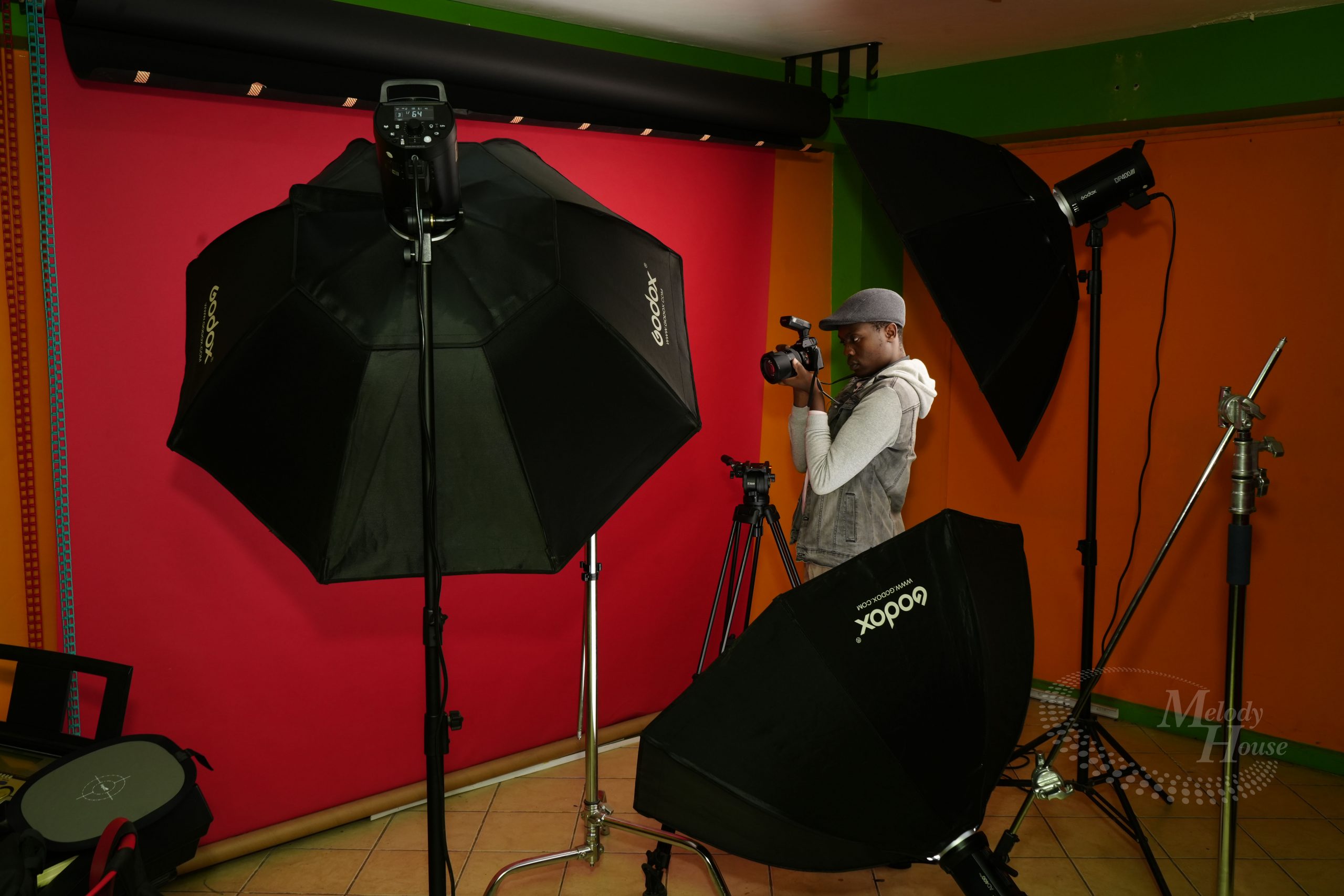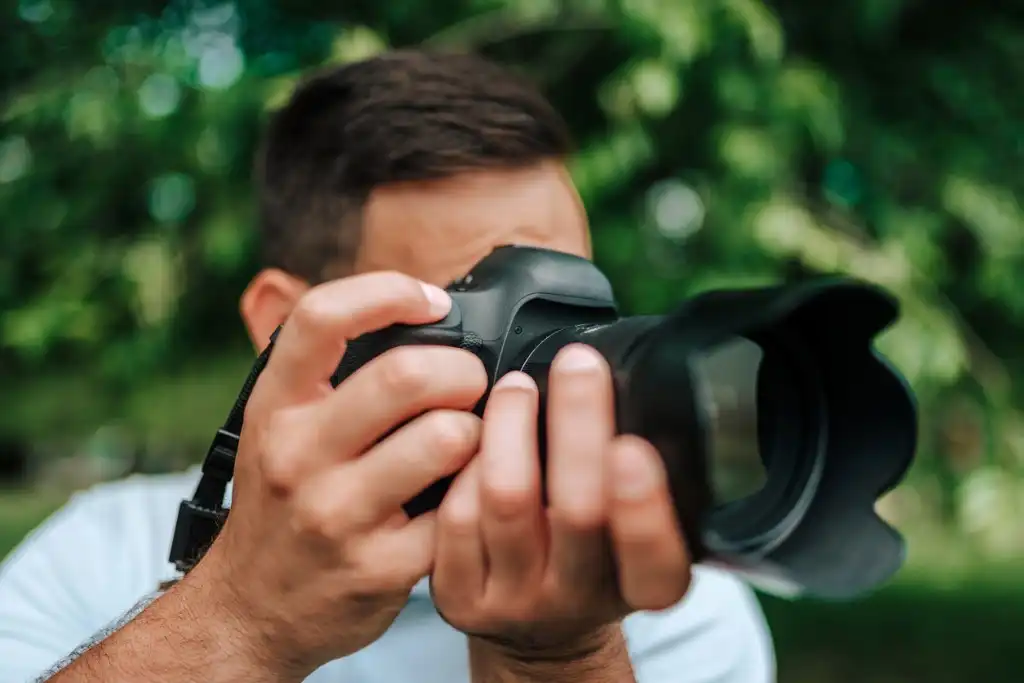What is photography?
Photography is the art and practice of making and capturing images with a camera or other photographic equipment. It enables people to express their creativity, capture memories, deliver messages, and tell tales through images.

For photography to be complete, there must be a device to be used. One may opt to use mobile phone but cameras are the widely used. Cameras are the best photography devices.
Therefore, to understand photography one must understand the components making up a camera system. The following are the Camera Equipment:
- Digital single-lens reflex (DSR) cameras, mirrorless cameras, point-and-shoot cameras, and smartphone cameras are just a few of the many varieties of cameras that are available. Each class has unique characteristics, talents, and benefits.
- Lenses: Various focal lengths, apertures, and capabilities are offered by various lenses. Examples of lenses that enable photographers to capture various views and produce desired effects include wide-angle lenses, telephoto lenses, and prime lenses.
- Tripods and other camera supports: Especially when shooting in low light or with long exposures, tripods and other camera supports give photographers stability and help them take clear, stable pictures.
HISTORY OF PHOTOGRAPHY
The history of photography is a fascinating journey that spans several centuries and involves various inventors, innovations, and technological advancements. Here is an overview of key milestones in the development of photography:
- Pre-Photographic Experiments (Before 19th Century): Artists and scientists had been experimenting with ways to capture and reproduce images since ancient times. Devices like the camera obscura were used to project images onto surfaces, providing a basis for understanding optics.
- Daguerreotype (1839): Louis Daguerre and Joseph Nicéphore Niépce are credited with developing the daguerreotype, one of the earliest successful photographic processes. The daguerreotype produced detailed and permanent images on metal plates coated with light-sensitive chemicals.
- Calotype (1841): William Henry Fox Talbot introduced the calotype process, which involved using light-sensitive paper to create paper negatives that could be used to produce multiple positive prints. This process laid the foundation for modern photographic techniques.
- Wet Plate Collodion Process (1851): Frederick Scott Archer’s invention of the wet plate collodion process allowed for the creation of glass negatives that produced sharper and more detailed images than previous methods. This process became widely used for portrait photography.
- Albumen Prints (1850s-1860s): Albumen prints, made from glass negatives coated with egg white and salt, became popular for their ability to produce clear and detailed photographs. They were commonly used for cartes de visite (small portrait cards) during the Victorian era.
- Eastman Kodak Company (1888): George Eastman’s introduction of the Kodak camera revolutionized photography. The Kodak camera came pre-loaded with film and allowed users to take multiple photos. After taking photos, users sent the camera to Kodak for film development and printing.
- Color Photography Development (Late 19th-20th Century): Various methods were developed to capture color photographs, including the Autochrome process (1907) and the first commercial color film, Kodachrome (1935). These processes brought color photography to a wider audience.
- 35mm Film and SLR Cameras (1920s): The introduction of smaller 35mm film and single-lens reflex (SLR) cameras made photography more accessible and allowed for greater mobility and versatility in capturing images.
- Digital Photography Emergence (Late 20th Century): The advent of digital technology transformed photography. The first digital camera, the Kodak DCS, was introduced in the 1970s. Digital cameras gradually improved in quality, leading to the widespread adoption of digital photography by the late 1990s and early 2000s.
- Smartphone Photography (21st Century): The integration of high-quality cameras into smartphones has made photography more accessible and instantaneous than ever before. Social media platforms and photo-sharing apps have led to an explosion in the creation and sharing of images.
- Digital Imaging and Post-Processing: Digital imaging software, such as Adobe Photoshop, has allowed photographers to manipulate and enhance images in ways that were not possible with traditional film
Terms used in photography
- Composition:
The positioning and arrangement of visual components inside an image is referred to as composition. In order to produce aesthetically appealing and well-balanced photographs, composition methods including the rule of thirds, leading lines, symmetry, and framing are used.
- Lighting:
Understanding and working with light may have a big impact on the atmosphere, ambience, and overall quality of an image.
Natural light, such as moonlight or sunlight, may have a range of effects based on the time of day, the surroundings, and the direction of the light.
In order to achieve exact lighting settings and effects, photographers have freedom and control over artificial light sources, such as studio lights or flashes.
- Exposure and settings:
Exposure is the term used to describe the quantity of light that reaches the picture sensor of a camera. The right exposure must be used to achieve a balanced image.
Exposure parameters include aperture, shutter speed, and ISO. Aperture controls the amount of light entering the camera, shutter speed determines the duration of the exposure, and ISO affects the camera’s sensitivity to light.
Just like other forms of art, photography has several genres. This includes
- landscape
- portrait
- street
- wildlife
- documentary
- fashion
- sports etc.
Each genre has its own characteristics, techniques, and subject matter.

Starting a career in photography requires a combination of passion, skill development, business acumen, and perseverance. The following points may help you as you start your photography journey:
- Choose the field of photography in which you wish to concentrate. It might be anything that piques your attention, including portraiture, nuptials, fashion, animals, landscapes, sports, and more. You may concentrate your marketing efforts and build specialized talents by concentrating on a certain niche. Spend some time learning and developing your photographic abilities. Self-study, online lessons, workshops, classes in photography, and mentoring programs are all viable options for achieving this. To improve your skills, practice frequently and try out new strategies.
- Depending on your preferred specialization, get a camera and other required photographic equipment. Find the equipment that best meets your demands and budget by doing some research. A camera body, lenses, memory cards, a tripod, and lighting gear are a good place to start. You may upgrade your equipment as you go based on your requirements.
- Build a solid portfolio that features your greatest work. Choose a range of pictures that show off your abilities and sense of style in the context of your selected specialization. To entice potential clients or employers, your portfolio should emphasize your distinct viewpoint and skills.
- Take on a variety of photographic assignments to start gaining skills. Offer your services to loved ones, close friends, or neighborhood businesses. This will assist you with developing your skills, gaining real-world experience, and creating a network of connections in the business.
- Establish a brand identity that reflects your photographic aesthetic and principles. Create social media profiles, a website, and a logo to promote your work and reach more people. Utilize these channels to promote your services, interact with your audience, and share your portfolio.
- Network with other photographers, business professionals, and possible clients by attending photographic events, seminars, and industry conferences. Build a network and develop cooperative initiatives with models, make-up artists, stylists, and other creatives to the advantage of all parties.
A number of essential elements that contribute to the overall effectiveness and impact of an image define good photography. Always keep in mind that photography is an art form, and that what is seen to be good photography depends heavily on individual taste and style. To produce images that speak to you and others, don’t be scared to build your own vision and experiment with various ways. The word “good photography” is ambiguous since various people may have varied tastes and viewpoints about what constitutes “good photography.”
A balanced and visually appealing arrangement of subjects, lines, forms, and negative space makes up a well-composed shot. By using strategies like the rule of thirds, leading lines, symmetry, and framing, the composition may be improved and the viewer’s focus can be directed to certain areas.

- The right lighting is essential to good photography. To achieve the proper mood, ambiance, and focus in an image, good photographers know how to use and manage light. To emphasize the subject, provide depth, and add character to the photograph, they pay close attention to the direction, intensity, and quality of the light. An photograph that has been exposed properly will not be either too bright or too dark. To catch the correct quantity of light, it requires establishing the ideal balance between the aperture, shutter speed, and ISO settings. A attractive image is produced by properly exposed images, which reveal features in the highlights, shadows, and midtones.

- A good shot should have sharpness where it is needed and be in focus overall. The subject should be crisp while preserving a beautiful background blur, if desired, therefore the photographer should be well-versed in depth of focus and discerning when choosing the focal point.
- The visual impact of an image may be substantially improved by making effective use of color and tone. To generate an aesthetically beautiful and well-balanced color palette, photographers pay close attention to color harmony, contrast, and saturation. They also control the tonal range to ensure accurate portrayal of the highlights, shadows, and midtones, producing a picture that is well-balanced.
- A strong image frequently conveys a feeling of depth and perspective. To give a picture a three-dimensional impression and draw the spectator in, photographers utilize a variety of tactics such leading lines, foreground components, and the inclusion of objects at varied distances.
- Great photography has the power to elicit feelings and convey a narrative. A image that makes the viewer feel something—whether it’s catching an unguarded moment, expressing a certain mood, or chronicling an important event—is frequently regarded as strong and unforgettable.
- The goal of a good photographer is to infuse their work with their distinct viewpoint and inventiveness. They experiment with various perspectives, arrangements, and methods to produce distinctive, aesthetically appealing photos that stand out from the throng.

- Technical skill is seen in good photography. This covers the appropriate use of camera settings, sharpness, noise reduction, accurate color reproduction, and optimal exposure. Knowing and understanding the technical components of photography enables photographers to successfully carry out their artistic vision.
Often, good photography expresses a clear idea and goal. The photographer has a thorough understanding of the topic, effectively conveys their vision, and effectively captures the core of the idea or moment they want to convey.
Some of the best examples of good photography include:
- Street photography: A spontaneous image of people moving through a busy city street, capturing a moment in time and depicting urban life.
- Wildlife photography: A picture of a regal tiger in its natural environment that captures the animal’s strength and beauty while emphasizing the intricate patterns in its fur and eyes.

- Documentary photography: A potent image that depicts a social or environmental situation, bringing awareness to it and eliciting feelings in the spectator to elicit a reaction.
- Architectural photography: An image that highlights the magnificence and distinctive design of a building or structure by utilizing perspective and composition.

However, photography is a personal interest hence one can make good photography from his or her personal interest.
